The first large group of Polish-speaking immigrants began arriving into New Castle, Pennsylvania, in the early 1890’s. Most of these hard-working immigrants hailed from the countries of Germany, Russia, and Austria-Hungary and came to work in the coal mines and various mills. The country of Poland had been partitioned and absorbed by several nations in 1795, and would not be officially reinstated as a nation until 1918. Most of these immigrants settled into tight-knit Polish neighborhoods, were fiercely proud of their own heritage, and did not openly welcome being “Americanized.”
Many of these Polish-speaking immigrants were Catholic or interested in the Catholic religion, but had issues with the mainstream Catholic Church. Among the issues was the fact that there were no Polish bishops and only a handful of Polish priests, Polish-speaking sermons were rarely held, the Polish language was generally banned in the parochial schools, and the church property almost exclusively belonged to the diocese vice the individual congregation.
Without a church of their own local Poles decided to attend services at St. Joseph’s Catholic Church, a German-ethnic parish located in downtown New Castle, and St. Mary’s Catholic Church, which featured a mostly Irish congregation. Finally, in the fall of 1902, with the assistance of the St. Mary’s Catholic Church, a Polish-ethnic congregation was organized to cater to the Polish community in the Oakland district of Union Township. The congregation, although not formally named yet, was referred to as the St. Mary’s Polish Catholic Church.
The Reverend Richard Phelan, the Bishop of Pittsburgh (from 1889-1904), dispatched the Reverend John S. Gorzynski (1869-1935), a prominent Polish priest serving in McKeesport, to assist the local community in establishing the new church. The first step was the acquisition of property along Maple Street on which to build a church. Gorzynski had previously helped the diocese establish several Polish churches in southwest Pennsylvania. The Reverend John M. Wojszner was then sent to act as a temporary pastor.
The Polish Catholic Church in Oakland had a very turbulent beginning dealing with issues of financial instability, disorderly conduct among parishioners, ownership of church property, and the naming of the church. In April 1903 the Reverend Boleslaus Pawlowski arrived in New Castle to assume the role as the first fulltime pastor. Pawlowski immediately began efforts to raise funds to build a church. Each married man of the new congregation was required to contribute $75 and each single man $50. The construction of a wooden frame church was started a month later. The men of the local community helped dig out the basement with shovels and contributed as much as they could in the coming months. Work on the church building progressed throughout the summer of 1903.
Pawlowski was soon embroiled in a bitter dispute within the troubled congregation. On Sunday, August 9, 1903, a rowdy group of parishioners, citing financial wrongdoing by the pastor, accosted and threatened Reverend Pawlowski during a ceremony at the church grounds. The pastor hired an attorney and five men were soon arrested for “rioting” in connection with the incident. The five men, convicted of a lesser charge of disorderly conduct, were all fined by the court. The arrests did little to quell the rebellion.
The New Castle News of Wednesday, August 19, 1903, reported it this way, “The evidence showed that after the special services over the arrival of the bells for the new church now in the course of erection in Oakland, the disturbance took place. The congregation consists of about 400 members and about 150 of them are objecting to the manner in which the priest is acting. They insist upon an accounting of the funds which were gathered by the priest from the members. The priest, according to the rules of the Catholic faith, is required to submit a report every month to the bishop of this district, and Bishop Phelan presides over the one to which the Polish church belongs. The dissatisfied members did some talking before the services last Sunday, but did not disturb the ceremonies, but after the religions exercises were over they demanded that a clergical meeting be held for the purpose of the priest delivering an accounting to the congregation.”
The same article went on to report, “The calling of these meetings are alone within the jurisdiction of the priest and he refused to comply with the demands of the objectors, claiming that he is required to render a monthly report to the bishop together with the approval of the committee, consisting of members of the congregation. These are the regulation proceedings in Catholic circles the world over and Father Pawlowski endeavored to impress this upon them, but they did not look at it in that light.”
The troubles continued and finally in September 1903, to appease the congregation, Bishop Phelan reassigned Pawlowski to Latrobe, Pennsylvania. The Bishop reached outside the diocese for a replacement and the Reverend Albert Sulek, then serving at a church near Little Rock, Arkansas, was called upon to take over as pastor. The first-ever service was held in the partially completed church the same month, while the building was completed in October 1903.
The New Castle News of Wednesday, November 4, 1903, reported, “The financial condition of the St. Mary’s Polish Church in Oakland is anything but gratifying at present and harmony has been a stranger almost among its members since the house of worship was erected. Following an execution on a note of a little over $100 upon the furnishings of the parsonage, Sheriff Brown was given a writ of execution of $300 to issue against the church. The note was signed by Bishop Phelan, of Pittsburg in whose name all the property is nested in favor of Caroline Plant, wife of Thomas V. Plant. However, the Sheriff was assured that steps would be taken to liquidate the indebtedness in a few days. A move to organize a new congregation was begun, and it is likely that it will be perfected in a short time.”
The trustees of the church borrowed money in late 1903 and the loans soon became the center of controversy. The New Castle News of Thursday, August 18, 1904, reported, “The case of the Commonwealth vs. the trustees of the Polish Church is again in court, and will be heard in Alderman Williams’ court Friday evening. The defendants are Valentine Cekorski, John Matyonski, Ludwick Korziniski and Stanislaus Powloski, and the information, which is made by Antoni Gierlach, charges that they obtained possession of a valuable security by means of false pretenses. A previous case in which a conspiracy was charged resulted in the discharge of the defendants.” The case went to a grand jury and I believe it was resolved to everyone’s satisfaction.
The completed church was scheduled to be dedicated on Sunday, July 31, 1904, but the ceremony was postponed for two months. It was then postponed indefinitely after further troubles developed between the congregation and Bishop Phelan. The main issues were the naming of the church and a dispute over ownership of church property.
The New Castle News of Wednesday, September 28, 1904, reported, “The dedication of the Polish Catholic church, situated in Oakland, which was to have taken place on Sunday, was postponed by an order from Bishop Richard Phelan, of the Pittsburg diocese, which includes the New Castle district. The congregation became indignant and rebelled against the mandate of the bishop. Rev. Albert Snick (sic), pastor of the church, would not speak upon the matter, and when requested to make a statement, said that he had nothing to give out to the public, but would make a report to Bishop Phelan Monday. The trouble is alleged to have resulted from an order sent here by Bishop Phelan, refusing to grant a dispensation for the dedication of the church under the name of St. Mary’s Polish Catholic church, as the name would conflict with the St. Mary’s church already established here. Bishop Phelan, it is said, agreed to grant the dispensation for the dedication under some other name, but the members of the congregation were turbulent and would not listen to any other name. There have been strained relations between the diocese the Polish congregation which dates back for some time.”
The Reverend John F. Andrzejewski, coming from an assignment in Butler County, took over the troubled church when he was appointed pastor in 1905. The issues with the diocese were eventually worked out and the flourishing congregation reached 1,200 members by the summer of 1907. The New Castle News of Friday, May 10, 1907, summed it up with, “The church is now in charge of Rev. John F. Andrzejewski, who through efficient pastoral work has succeeded in increasing the congregation as to numbers and entirely wiping out the discord that existed among the membership.”
A small parochial school was also founded in about 1904 and classes were held in a one-room building on Mahoning Avenue. In June 1907 the church took an option on a lot next to the church, where they planned to erect a large school building sometime in the future.
The same article also mentioned the upcoming dedication with, “Wednesday, August 15, will mark the dedication of St. Mary’s Polish Catholic church In Oakland. It will be dedicated under the name of the Church of the Madonna of Czestochowa. This name was that desired by many of the congregation after the building had been erected and over which the trouble in the membership occurred several years ago. Although the church has stood for a long time, yet it had been impossible to arrange for the dedication until the present time.” The name is derived from a revered icon of the Virgin Mary, known as the Black Madonna, housed in the Jasna Gora Monastery in Czestochowa, Poland.
The New Castle News of Wednesday, May 15, 1907, had this to say about the long-delayed dedication, “With solemn pomp and dignity, the beautiful edifice of the Church of the Madonna of Czestochowa, was dedicated Wednesday morning by the Right Rev. Bishop Regis Canevin of the Pittsburg diocese. The bishop and his retinue were met at the Lawrence school house by the Knights of St. George, the society of St. Joseph, the society of St. Stanislaus, the Rosary society, and the school children of the parochial school. All formed a pontifical procession, and marched two abreast to the parochial house, where the opening ceremonies were held. They then proceeded to the front of the church building. Standing stately and silent, with closed doors, and with no one within, the solemn exercises of dedication took place promptly at 10 o’clock. The bishop walked around the edifice, while the St. Mary’s Moninisko male choral society chanted “Behold the High Priest Comes.” The visiting priests assisted in the ceremonies. The doors were then opened, and a processional, led by the bishop, was formed to the interior of the church. The interior and altars were then blessed and consecrated by the prelate. Solemn high mass was then celebrated by the bishop, the other priests, with the choir and organist assisting. The exercises were of the most solemn nature, and were witnessed by a congregation that more than taxed the capacity of the church. The Very Reverend Father John Gorzynski of the South Side, Pittsburgh, then preached the dedicatory sermon in Polish.”
In November 1909 the Reverend Andrzejewski was transferred to Westmoreland County. The new pastor was the Reverend John Jaworski, coming from an assignment in Glassport, Pennsylvania, arrived soon after. At that same time the church was embroiled in another financial crisis, involving the well-known investigation into the dealings of financier Patrick J. Kieran and the Fidelity Funding Company.
The New Castle News of Friday, November 12, 1909, had a front page headline that read, “Polish Church Property Will be Sold by Sheriff Unless Big Claim is Paid.” The article went to elaborate with, “Steps to collect a mortgage of $9,000 hanging over the Polish church in Oakland were taken in papers filed at the court house today to an action brought by the Carnegie Trust company against Rt. Rev. Regis Canevin, trustee for the congregation… The action is an echo of the operations of P. J. Keiran of the Fidelity Funding company whose methods attracted considerable attention throughout the country recently… The mortgage was originally placed with the Fidelity Funding company through Keiran. It was assigned by the Funding company to the Safe Deposit and Trust company of Pittsburg and by the latter company to the Carnegie Trust company. It is claimed in the papers filed that the congregation was defaulted on the interest which, according to the terms of the mortgage, was to be payable semi-annually.”
It was advertised that the church would be sold at auction on March 7, 1910 (and again on March 9 and April 1), but the action was delayed as new details came to light. It was soon determined that $7,000 of the mortgage had been paid off, so the church only owed $2,000 and about $1,400 in interest.
And the troubles just kept on coming. The New Castle News of Thursday, March 10, 1910, reported, “In addition to trouble in the courts, over the sale of the church itself, the congregation of St. Mary’s Polish Catholic church is having considerable trouble within itself as there are a number of members who formerly belonged to an independent church and they are agitating the proposition of leaving the church and forming an independent congregation leaving the Church of Rome. The secretary of the committee states, however, that this desire to leave the mother church is confined to about seven or ten men, who have already held a meeting favorable to such a step. It is their desire to purchase the church, and make it independent. On the other hand, the other faction plans to borrow the money to pay off the mortgage on the property, thus ending all the trouble.”
Jaworski and the diocese officials were eventually able to work out the mortgage issue and the church was saved. Jaworski was succeeded as pastor in March 1912 by the Reverend John Wasyliszyn, who came from an assignment in Indiana County, Pennsylvania. It was under Wasyliszyn’s reign that a modern parochial school was erected next to the school. Construction began in the spring of 1913 and it was completed just in time for the opening of the school year later that fall. The school was initially taught by the Sisters of St. Joseph of Stevens Point, Wisconsin, but in 1922 the Sisters of the Holy Ghost (Spirit) of Pittsburgh took over the administration. In the fall of 1920 the school was home to 317 students. A large convent was also erected behind the church to house the Sisters of the Holy Ghost.
In late 1912 the Madonna church helped out when another group of Polish immigrants on the South Side, probably containing some of the troublesome “independents,” as they sought to establish their own Catholic Church. They held a meeting in the Sheep Hill area in January 1913 and officially organized themselves. A few months later they purchased a large piece of property on Miller Street and a small church was erected at the site. On June 24, 1914, the congregation was officially chartered as the Polish Catholic Church of Holy Trinity. The new congregation was immediately at odds with Catholic officials and they soon dropped the word “Catholic” from their official name. The Holy Trinity congregation remained unaffiliated until 1919 when it aligned itself the Polish National Catholic Church (PNCC), a breakaway church founded in Scranton, Pennsylvania, in 1897.
The Madonna of Czestochowa Catholic Church was back in the news again in late 1916. On December 20, 1916, the Reverend Wasyliszyn was arrested by Sheriff Frank Waddington following a charge made by a parishioner named Mike Mitchell. The New Castle News of Wednesday, December 20, 1916, reported, ““…the priest is charged with alienating the affections of Mrs. Mitchell. Rev. Wasyliszyn denies the charge and furnished bail in the sum of $1000 for his appearance. Mrs. Mitchell, it is claimed, was formerly a housekeeper in the house of Rev. Wasyliszyn. After she married Mitchell and went to live with him, Mitchell alleges that Wasyliszyn still paid attentions to her with the result that Mitchell was deprived of her love and affections. This is valued at $5000 according to the claim made by Mitchell.” Mr. Mitchell, who was married about six months, also claimed the priest recently threatened to shot him over the matter.
The case actually went to trial in early March 1917. The New Castle News of Friday, March 9, 1917, reported the outcome with, “Rev. John Wasyliszyn, pastor of the Polish church in Oakland, charged with surety of the peace by Mike Mitchell, was discharged following a hearing before Judge Emery this morning. The costs were placed on Mitchell.” Wasyliszyn was exonerated and cleared of any wrongdoing. The next few years brought relative peace to the congregation.
In late 1919 the Reverend Francis Baczewski, ordained in 1898, was assigned to take over as pastor of Madonna. Baczewski was familiar to many local people as he had been serving as the pastor of St. Michael’s Catholic Church in New Castle for the last few years. One of his many outstanding contributions was helping to establish the S.S. Philip & James Catholic Church in the early 1920’s.
In 1922, in response to the growth of the Polish community in the Sheep Hill district of New Castle, it was decided to establish another Polish-ethnic Catholic church there. An earlier attempt had gone awry, as the Holy Trinity congregation had broken away from the mainstream Catholic Church. A small group of parishioners from Madonna Church helped formed the basis of the new congregation, soon led by the Reverend Vincent V. Stancelewski. Land was soon purchased and construction of a new church commenced soon after. The new S.S. Philip & James Church was opened for services in December 1924, but not fully completed for another four years.
Baczewski led the Madonna congregation for fifteen years until he passed away on July 12, 1934, at the age of sixty. He had been ill for several years but his death still came as a shock. His obituary mentioned his funeral held on July 15, 1934, “Members of the congregation and friends of the deceased priest filled the church and at 9:30am the office for the dead was conducted, with the priests choir singing. The mass was conducted at the St. Joseph altar of the church with the Rev. Fr. V. V. Stancelewski of the St. Philip-St. James church… Three special services following the mass, in the St. Joseph altar, Sacred Heart altar and the sanctuary, with the Rev. A. Muszynski of Carnegie; Rev. C. Rybinski, Dubous, and the Most Rev. H. C. Boyle. D. D. of Pittsburgh officiating. Final absolution was given by Fr. Boyle. The earlier children’s mass was said by Rev. E. Sieoeki of Pittsburgh. He was born to his last resting place in Madonna cemetery by priests: Fr. A. Muszynski. Fr. Drelak, Fr. Labjewski, Fr. Kupiec, Fr. Sieroeki and Fr. Stancelewski.”
In May 1935 the Reverend Edward R. Szelong, ordained in 1923 and serving as an assistant pastor in McKeesport, Pennsylvania, was appointed to succeed Baczewski. He was succeeded by the Reverend Edward P. Pikulik, then serving with St. Genevieve Catholic Church in Canonsburg, Pennsylvania, in 1941. Pikulik, a native of Milwaukee, Wisconsin, led the congregation through the challenging times of World War II and into the post-war period.
The congregation held a week-long celebration beginning on Sunday, August 24, 1952. The New Castle News of Friday, August 22, 1952, reported, “The Church of the Madonna is preparing to celebrate the 50th year since its establishment with Golden Jubilee which begins Sunday, August 24, with a Pontifical Mass at its church. The Reverend John Francis Dearden, Bishop of Pittsburgh, will say the mass to be held at 11 o’clock Sunday morning. Actually, the parish began with the purchase of the ground on which to build a church. But, it was ten years earlier in 1892 that the first Polish settlers started to arrive in New Castle and the need for a church and a clergy using the Polish language became evident.”
The festivities ended on Labor Day, Monday, September 1, 1952, with a banquet at the Scottish Rite Cathedral. The New Castle News of the next day reported, “Seven hundred guests at the Golden Jubilee banquet which ended celebrations by the Church of the Madonna during its fiftieth anniversary heard a series of speakers pay tribute to the Madonna parish and the Poles of New Castle. The banquet was held Labor Day in the Cathedral. After toastmaster Attorney Walter A. Kielar was introduced by the banquet program chairman Dr. Stanley Zaremba, he gave a brief history of the Polish people who settled in New Castle. Short addresses followed the invocation by Pastor Labujewski of St. Stanislaus, Ambridge, Pa. Among the speakers were: Pastor F. N. McCarter of St. Mary’s, New Castle; Judge John C. Lamoree; Superior Court Judge Blair Gunther; Very Rev. Prusinski, St. Stanislaus K. Parish, Chicago; Mayor Edward A. DeCarbo; Polish Catholic Union of America representative Mrs. Polilowski; and Auxiliary Bishop Atkielski, Milwaukee.”
Pikulik, who served the church for forty years, resigned due to ill health in August 1956 and settled into retirement in his hometown of Milwaukee. He was soon succeeded by the Reverend John J. Fic, ordained in 1942 and previously serving as an assistant pastor at St. Peter’s Catholic Church in McKeesport. The popular Reverend Fic, born in Carnegie, Pennsylvania, served the congregation for the next eight years. Unfortunately, Fic died after a lengthy battle with lung cancer at the age of forty-seven in February 1964. His obituary in the New Castle News read in part, “No Mass will be held in St. Ignatius Church, Carnegie, for Rev. John J. Fie, pastor of Madonna Church, who died Sunday. The body will be transferred to Madonna Church from the rectory at 3 p.m. today to lie in state. Bishop John J. Wright will celebrate the Solemn Pontifical High Requiem Mass at 11 a.m. tomorrow. The Office of the Dead will be recited at 10:30 a.m. in the church. Following the Mass, the procession will precede to St. Ignatius Cemetery in Carnegie where interment will take place tomorrow afternoon.”
The Reverend Casimir F. Lewandowski, a native of Armstrong County who was ordained in 1945, arrived a month later and served as pastor for the next decade. The New Castle News of Saturday, March 7, 1964, remarked, “Father Lewandowski is also a traveler and “shutterbug.” He spent six weeks in 1953 touring Germany, Italy, Greece and the Holy Land. As he went, he photographed the places he visited. He has already shown many scenes to the school children.”
The parochial school, suffering from dwindling attendance, was closed down in June 1968. The Sisters of the Holy Spirit, who had served the school for forty-six years, vacated the convent and departed for new assignments. Lewandowski abruptly resigned just before Christmas in December 1974 and apparently left the priesthood.
The Reverend Richard F. Zula was quickly dispatched by the Diocese to take over as pastor in late December 1974. Zula later had the old rectory on Maple Street torn down and moved into the former convent behind the church. A memorial, to be built in honor of the founders of the church, was soon planned to be placed at the site of the old rectory. The Sacred Heart Shrine was dedicated during a ceremony held on Sunday, August 29, 1976.
Zula was also in charge of the festivities during the 75th anniversary celebration held on Sunday, August 28, 1977. Among the attendees was the esteemed Reverend Vincent M. Leonard, the Bishop of Pittsburgh (from 1969-1983). The New Castle News of August 20, 1977, mentions, “The children of the parish will present the Bishop with traditional Polish gifts to commemorate the occasion. He is expected to receive a wood-carving f r om Zakopane, Poland; “malowanky,” the hand-decorated Polish Easter eggs which symbolize resurrection and new life; a painting of the Madonna, and the traditional Polish welcome gilt of bread and salt. During the dinner, music will be provided by Tom Ballog and his Wandering Violins. After the banquet, dance music will be provided by the Ray-Tones.”
Zula departed for a new assignment in July 1980, but in a sad state of affairs was convicted of despicable sex crimes a decade later, spent time in prison, and was banned from the ministry. The Reverend Stan M. Gregorek, who succeeded Zula, made it a priority to expand the various church programs and classes for children and adults. Gregorek also took on the role of “administrator” of the S.S. Philip & James Catholic Church beginning in 1989. After a very successful 12-year stint as pastor he was reassigned to Natrona Heights, Pennsylvania, in October 1992. He was given a rousing farewell banquet, attended by many dignitaries, on Sunday, October 18, 1992. The New Castle News of October 20, 1992, remarked, “Gregorek was recognized as a pastor, spiritual guide and friend by Madonna Church Council President Dan Kieler. During his tenure as pastor, Gregorek instituted programs of lay and youth ministries, Bible classes, monthly healing masses and the Christmas and Easter festivals. During that time, the Madonna congregation grew by 26 percent.”
The Reverend John Vojtek, coming from Glenshaw, Pennsylvania, succeeded him as pastor in charge of both Madonna and S.S. Philip & James Churches. In March 1993 it was announced, as part of a Diocese-wide reorganization and revitalization plan, that the Madonna parish would be suppressed (closed) – and would be merged with the St. Mary’s Catholic Church/Parish to form the new Mary, Mother of Hope Parish. The two churches would remain open as “worship sites” for the time being. The merger officially took place on May 29, 1993. At that time Vojtek and the Reverend Eugene J. Dougherty at St. Mary’s Church were both relieved of their duties as pastors and replaced with the ministry team of the Reverends Robert J. Cedolia and W. Peter Horton. Cedolia and Horton were placed in a difficult position as their new congregations were displeased with all the sudden changes.
Horton departed for another assignment in June 1994, while Cedolia continued serving as pastor of both churches for another two years. Cedolia was given a new assignment in Plum, Pennsylvania, in June 1996, and was replaced with the Reverend Victor J. Molka Jr. Molka had been serving as the Catholic chaplain of St. Clair Hospital in Mt. Lebanon, Pennsylvania. Cedolia and Molka were well acquainted, as both were ordained in 1978 after studying together at Mount St. Mary’s Seminary in Emmitsburg, Maryland.
Reverend Molka faithfully led the two congregations for the next eight years. It was a sad time when it was announced in early September 2004 that the Madonna Church would be closed by the end of the month. The last service, performed by Molka, was held at Madonna Church on Sunday, September 26, 2004. The Madonna of Czestochowa Catholic Church, a longtime supporter of the Polish-American community, was closed after 102 years of proud service. Afterwards, St. Mary’s, the lone remaining worship site of the parish, became known as the Mary Mother of Hope Catholic Church. Molka continued to serve as pastor of St. Mary’s (Mary, Mother of Hope) Church until he was reassigned six years later.
The vacant Madonna Church property, including the school and rectory, was sold to the Prevailing Word World Outreach Center, led by the Reverend David Young, in June 2005. It was renovated and reopened as a house of worship a few months later and remains in active service today.
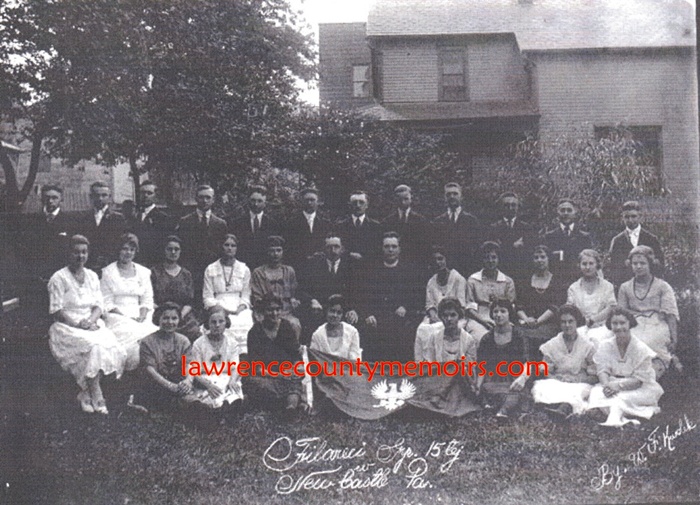 A gathering of the Filareci (vocal group) or choir of the Madonna Catholic Church. (c1936) (Photo courtesy of Joan Hemming) Full Size |
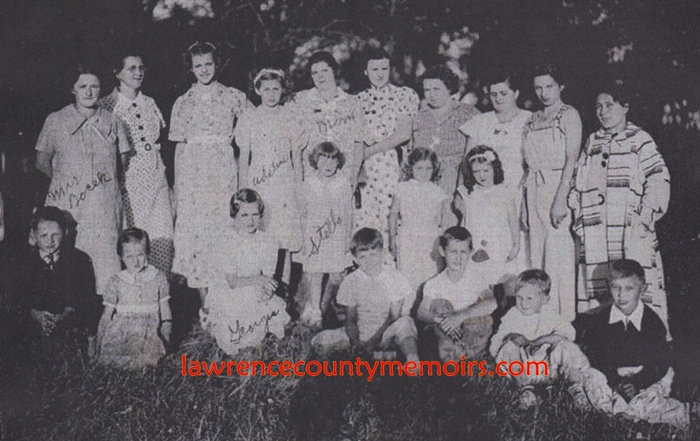 An outing by members of the Madonna Church. (c1936) (Joan Hemming photo) Full Size |
 (Aug 2010) |  (Aug 2010) |
 (Aug 2010) |  Looking down Maple Street at the old church. (Aug 2010) |
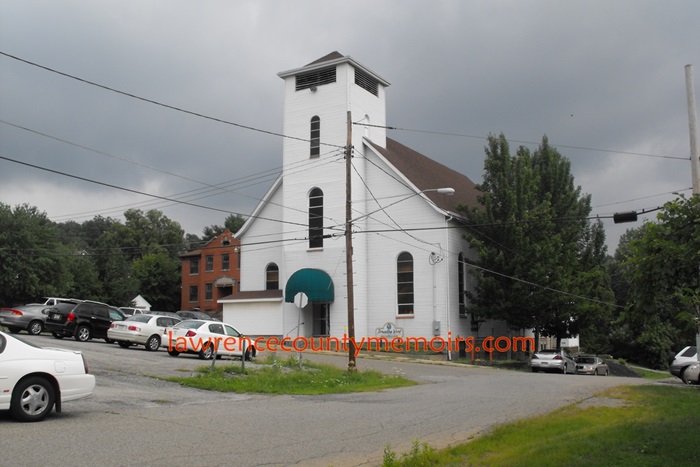 (Mar 2012) |





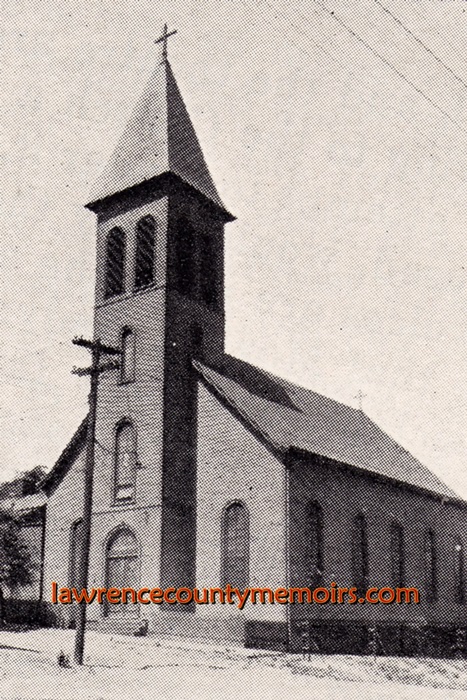

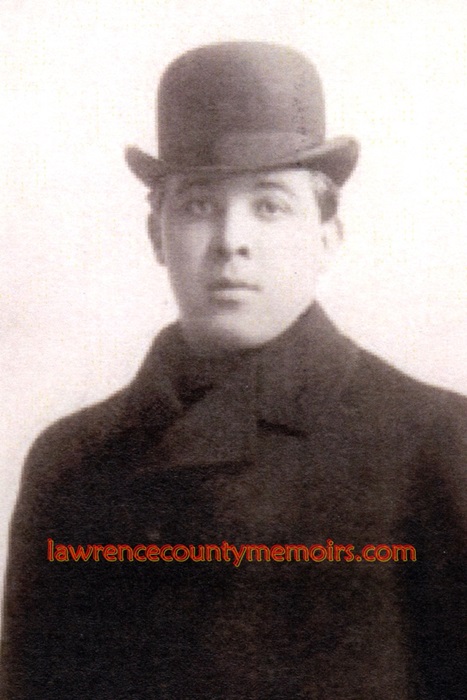
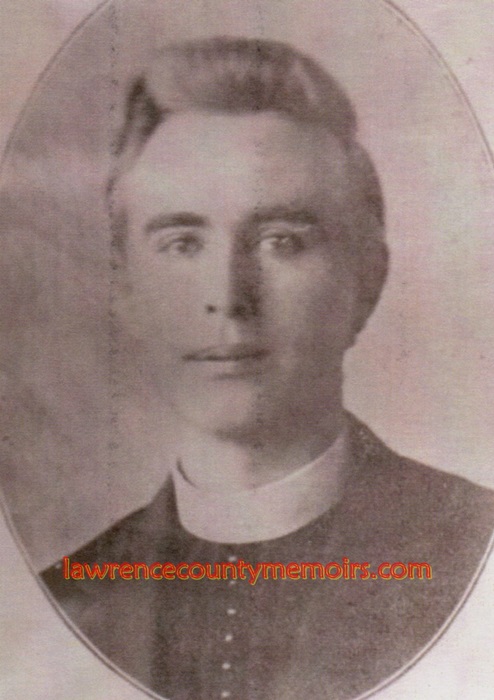
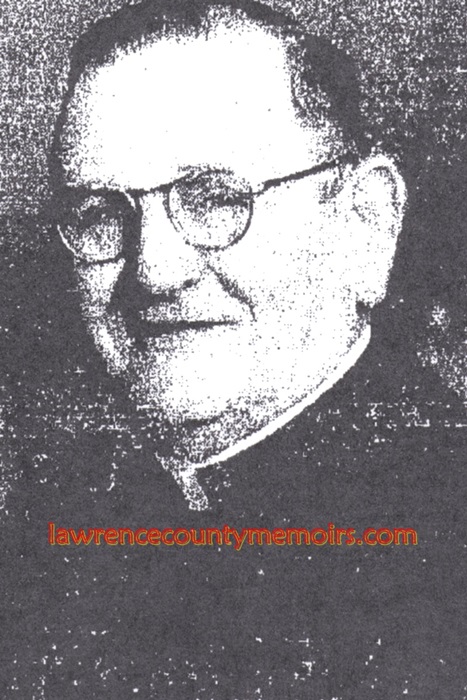
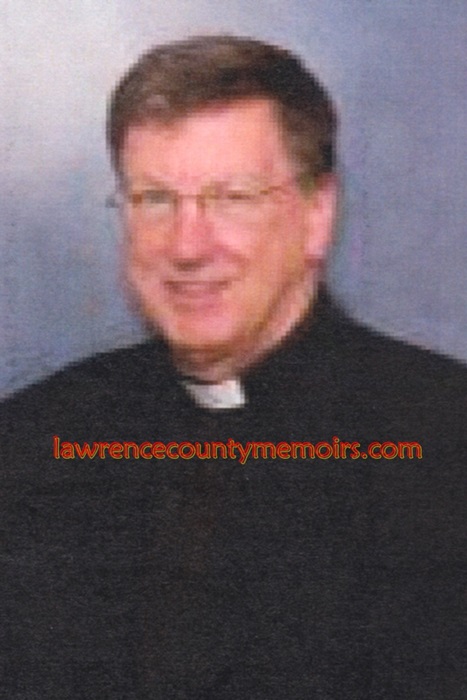








Comments
Bob Babick #
Under one of the pics you mention how you are unsure if the Madonna School was used again following the fire of 1970. I actually attended several CCD classes there in the late 1980’s and early 1990’s. My family and I were members of Ss. Philip and James Church. There was a period of time, before that church became part of St. Vincent de Paul Parish, that Madonna and Ss. Philip and James shared a priest. During those few years the sacraments of first Holy Communion and first Pennance were combined with children from both parishes.
Jeff Bales Jr. #
(EDITOR’S NOTE) Thanks Bob. I updated the caption to reflect the info you provided. Jeff
D. Fee #
I attended Madonna school for grades 1 – 3 (1966-70). Though the school housed grades 1-8, there were only 4 classrooms, so there were 2 grades per room, with just the one teacher. When we had Polish lessons, we went up to the 7th & 8th grade class room, and we had to share a desk and chair with the older kids. Sister Claire taught grades 1-2. She was young and so pretty. Sister Ann was the principal and taught 7-8 and we were terrified of her. The majority of the kids went to Union when the school closed in 1970.
Joan Hemming #
http://www.bishop-accountability.org/news3/1988_11_11_AP_ThreePriests_Francis_Pucci_etc_2.htm
Further information about Father Zula can be found here. It was a sad chapter in the church to learn of the molestations by the priest. Thank you for putting together the history of the church. My relatives came here in 1901 and lived just a few blocks away.
Marie Bondi #
my husband and i lived on maple street, directly across from the rectory house when father Lewendowski was the priest their, she attended madonna school for about 2 years, from 1965- until 1967 I believe. used to help out in the cafeteria for lunches in the basement of the church, I remember Sister Claire and Sister Ann. was nice and close for school for our daughter and mass for us. our son was also baptized at madonna church. good memories there!!!
Charles A. Via #
I attended Our Lady of Czestochowa School from 1958-1966. My two sisters Nancy and Patty graduated from here also. Sister Margaret nicknamed me “Charlie” the 1st day of school in 1st grade. This name followed me for eight years. It was a wonderful place to learn and grow up. Life was very different back then and the Sisters were from another era.
I well remember Sister Margaret, Sister Fidelis, Sister Anne, Sister Leona, Sister Harold and Sister Clair. All but Sister Anne and Sister Clair are deceased. Sister Anne is retired and celebrated her 75th jubilee of her vows in 2014 and is living in Marian Manor Nursing Facility in Pittsburgh. Sister Clair (now Sister Madalyn) is still very active in her pastoral ministry and works at Marian Manor.
This past August 29, 2015 I went to the motherhouse of The Sisters of the Holy Spirit in Pittsburgh and also to Marian Manor to visit with Sister Madalyn and Sister Anne (now in her 90’s). I didn’t expect either of them to remember me, so I wasn’t disappointed that they did not. I hadn’t seen either of them for 49 years and it was so wonderful to spend the day with them. I plan now to visit the Sisters every year when possible.
I have so many nice memories from my days at Madonna and now some very special recent memories. I’m deeply indebted to our Sisters, much more than I can say here. My life is still being positively affected by their teaching and discipline. They were and still are the best!!! I ask that everyone reading this, especially anyone who knew the Sisters to remember them in your prayers.
Barbara Pack #
I can’t believe it I do remember all the Sisters . I do remember you, but forgot Patty. That has been a long time! I started you with you but failed a grade and was with your sister Nancy rest of the years! I can believe how you are keeping up. I am married but my last name was Barbara Sniezek. I left with Nancy in1967 I will remember them in my prayers. Those were the days to remember.
Christopher Montsilos #
My Maternal Grandmother was Mary Zombek (nee Kielar) worked and lived with her children and husband across from the rectory and church on Maple street. She was the Parish Housekeeper for the priests (Pikulik) for many years and raised her family in Madonna Polish Catholic Church and School. She also headed up the church kitchen and cooked for the school children lunch meals, as well as involving her four girls and one boy in church life at Madonna. After the sisters moved out of the convent, she moved in the house and continued her duties for the church and parish. I have very fond memories of Holidays spent at the “Sisters House” as Grandmother always called it; many memories playing in the church basement and kitchen during festivities and dinners. We also used to have water balloon “wars” we filled our balloons outside the old rectory at the spigot and “bombed each other” in the church parking lot. I also remember the Shrine for Mary by the rectory garage where we used to pray to her. Christmas 1973 was our last time all were together there as Fr. Zula came in shortly afterwards with his mother as housekeeper, and my Grandmother retired. They were fabulous days for us and I think of Madonna Parish and my Polish Catholic roots nestled in the hills of Pennsylvania many times.
My deep faith in God I give homage to our childhood spent growing up in the church and being taught life’s lessons, and those old Polish Traditions are priceless! They certainly are the days to remember.
Christopher Montsilos (Mutchulos)
Comment